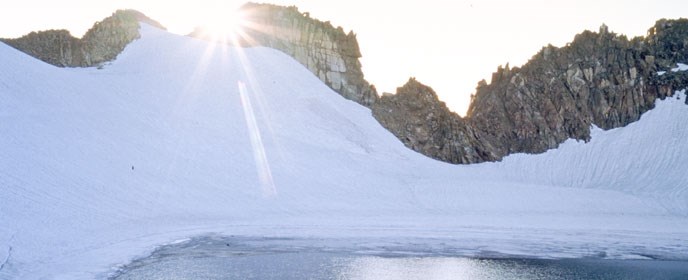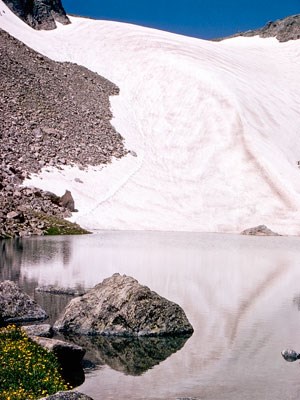
NPS 
NPS Glacial geology in Rocky Mountain National Park can be seen from the tops of the peaks to the bottom of the valleys. Ice is a powerful sculptor of this natural environment and large masses of moving ice are the most powerful tools. While the glaciation periods are largely in the past, Rocky still has several small glaciers. Other telltale marks of giant glaciers can be seen all throughout the park. As glaciers move, they pick up rocks, gravel and sand. These rock fragments freeze into the glacial ice and serve as very effective chisels that carve the landscape in which they cross. Imagine chunks of granite being pressed down into the underlying material by tons of ice above it. This mechanism can carve rock easily, and glacial grooves are left as evidence of it. As glaciers ebb and flow, they sometimes leave lateral moraines along their sides or terminal moraines at their ends. These moraines are like the beach lines along lakes and indicate the highest level to which the glacier extended. They can be identified because they consist of a variety of different sized rocks. As time passes, they are covered with vegetation and are much less recognizable to the casual observer. When the glacier finally melts, the rocks and debris it carried are released. They often form a thick layer which can weather into deep, rich soil. The rock fragments are left in places far from where they originated, and are referred to by geologists as erratics (rocks out of place). |
Last updated: November 18, 2021
